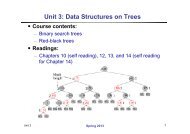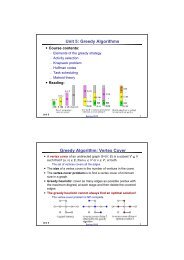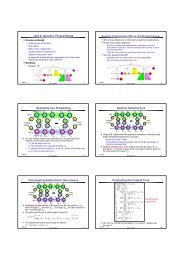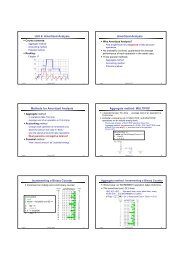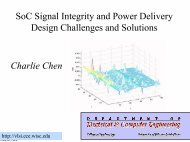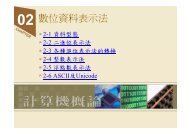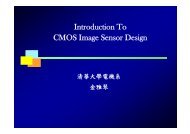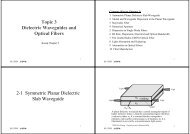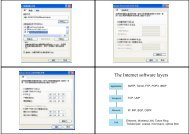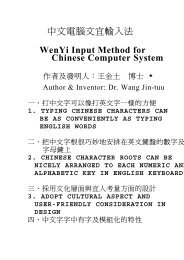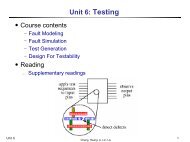S. H. Tseng, "PSTD Simulation of Optical Phase Conjugation of Light ...
S. H. Tseng, "PSTD Simulation of Optical Phase Conjugation of Light ...
S. H. Tseng, "PSTD Simulation of Optical Phase Conjugation of Light ...
Create successful ePaper yourself
Turn your PDF publications into a flip-book with our unique Google optimized e-Paper software.
amplitude, it is possible to cause light to interfere constructively at a targeted position within a<br />
scattering medium. In other words, the undesired scattering effect caused by scattering<br />
medium can be undone by means <strong>of</strong> OPC, and light can potentially be guided deep into<br />
biological structures. Experimental progress to utilize OPC for biomedical application has<br />
been reported [1]. However, the characteristics <strong>of</strong> OPC phenomenon is not yet well<br />
understood, further analysis is required. To analyze the optical characteristics <strong>of</strong> OPC, a<br />
simulation that can yield accurate electromagnetic field information is desired.<br />
Incident<br />
light<br />
OPC Inversion<br />
Fig. 1. Schematic <strong>of</strong> the serial OPC simulation. Incident light multiply scatters through a<br />
scattering medium consisting <strong>of</strong> N dielectric cylinders. To account for light traveling long<br />
optical paths before undergoing OPC, the electric field and magnetic field in the OPC inversion<br />
region is sequentially recorded. The recorded field information is later inserted sequentially to<br />
simulate OPC phenomenon while accounting for light propagating long optical paths.<br />
In this paper, we report an innovative OPC simulation technique that can handle light<br />
propagating long optical paths that was not feasible before. <strong>Light</strong> propagating long optical<br />
paths needs to be taken into account in order to accurately simulate the OPC phenomenon.<br />
However, with the previously reported simulation method [2], a very large simulation grid is<br />
required to account for long optical paths. Hence, the previously reported method is only<br />
applicable to optically thin scattering media; for optically thick scattering media, an<br />
enormously large computational grid is required to account for long propagating light and is<br />
therefore infeasible. In this paper, we propose an advanced OPC simulation technique that<br />
can account for light propagating long optical paths. The proposed OPC simulation technique<br />
enables determining the ideal OPC refocusing efficiency <strong>of</strong> light through macroscopic<br />
optically-thick, scattering medium that was not possible to simulate with previously reported<br />
methods.<br />
2. Serial OPC simulation<br />
A schematic <strong>of</strong> the serial OPC simulation is shown in Fig. 1. The pseudospectral time-domain<br />
(<strong>PSTD</strong>) technique [3, 4] is implemented to simulate the OPC phenomenon <strong>of</strong> a 2-D phase<br />
#105789 - $15.00 USD Received 5 Jan 2009; revised 18 Mar 2009; accepted 18 Mar 2009; published 23 Mar 2009<br />
(C) 2009 OSA 30 March 2009 / Vol. 17, No. 7 / OPTICS EXPRESS 5491



